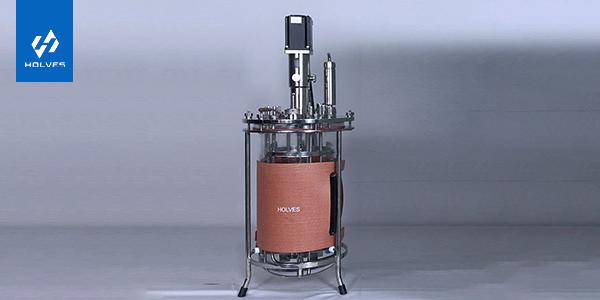
Why should we clean the fermenter regularly?
When the fermenter is in use, due to the influence of the environment or other reasons, the surface of the fermentation materials and containers of the fermenter are attached to microorganisms, bacteria and other impurities and other pollutants, so that the materials and containers in the fermenter can not be fermented properly and affect the fermentation process. In order to make the experiment in the tank accurate and smooth, it is necessary to clean the fermenter regularly.
The ways to clean the fermenter
According to the different characteristics of microorganisms, fermenter cleaning is mainly divided into organic acid cleaning, alkali solution cleaning and ultrasonic cleaning.
1. Organic acid
Organic acids are mainly hydrochloric acid, sulfuric acid and phosphoric acid. They are generally used to clean the grease on the surface of the equipment, and also have the effect of sterilization and disinfection.
Organic acid cleaning is easy to operate and has better effect. However, the concentration of organic acid is high, which will make the surface of the equipment have a strong irritating smell.When cleaning the surface of the equipment with organic acid, if the concentration is too high, it will lead to serious corrosion of the equipment, and even perforation and other phenomena; if the concentration is too low, can not achieve the cleaning effect. Therefore, when cleaning with organic acid, according to the actual situation to determine the optimal concentration.
2. Alkali solution
Alkali solution cleaning is a traditional method, mainly using sodium hydroxide.According to the equipment material and cleaning requirements to determine the appropriate concentration, generally 2%-4%.Since alkaline solutions have a certain corrosive effect on the equipment, appropriate measures should be taken to control parameters such as alkaline concentration, temperature and pH value.
3. Ultrasonic
The ultrasonic energy is used to impact the inner wall of the fermenter to strip off the attached impurities and microbial debris.
Regardless of the method used, be sure to rinse the vessel well with water after cleaning to ensure thorough removal of the cleaning agent. Also ensure that the cleaned vessel and piping are dry to avoid residual moisture that can lead to fermentation failure.

Here is the Holves brand website, https://www.bjholves.com/. Providing different types of industry information, technical knowledge, and solutions, we have developed and produced several new laboratory fermenter, bioreactor, tangential flow filtration system and other equipment to meet your needs from experimental to industrial production.
More questions to solve?
More Questions
More Questions
[Ceramic Membrane Filtration] Ceramic membrane filtration is a physical separation process that uses ceramic materials with porous structures to separate particles, microorganisms, and dissolved substances from liquids....
[Tangential Flow Filtration] The Application of Tangential Flow Filtration Cassettes...
[Four-Piston Diaphragm Pumps] What is a Four-Piston Diaphragm Pump? How Does a Four-Piston Diaphragm Pump Work? What Are the Key Advantages of Four-Piston Diaphragm Pumps?...
[Photobioreactor] Photobioreactors are specialized cultivation systems designed to grow photosynthetic microorganisms such as microalgae, cyanobacteria, and other photosynthetic cells under controlled environmental conditions. Lab-scale photobioreactor systems serve as...
[Fermenters] Optimizing Fermenters for Enhanced Production...
[Bioreactors] Biological Reactions in Bioreactors: Advanced Solutions for Efficient Fermentation...
[Tangential Flow Filtration] Tangential Flow Filtration (TFF) is a separation process widely used in various industries, especially in biopharmaceutical manufacturing, water treatment, and chemical processes....
[Small Spray Dryers] Learn the Basics of Small Spray Dryers...
[Fermenter] You can find the answer to the question about fermenter feed supplement……...
[Fermenter] Pay attention to these things when clearing the stainless steel fermenter to prevent secondary contamination....
